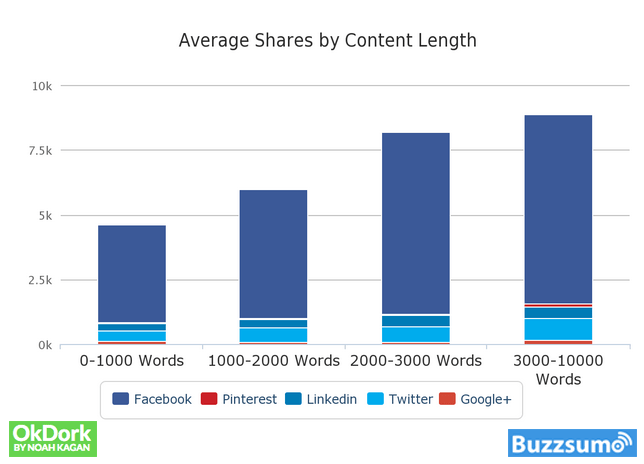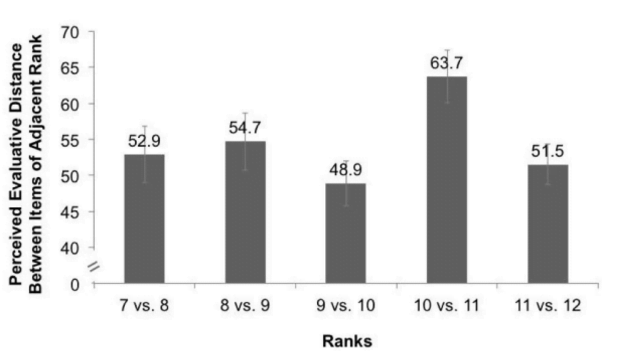To grow your blog you put in your very best on every blog post you publish. Line by line, word by word to ensure you publish nothing short of the best to grow your blog traffic.
You even followed the rules by attaching shareable images, breaking them into digestible and readable paragraphs, and also carrying out the best outreach marketing campaign.
After all these tedious activities, they just don’t bring the result you were hoping for (traffic, shares, links, leads, etc.)
Table of Contents
How To Increase Your Blog Presence By Content Types
So, what then could be the cause? Well, the reason is not far-fetched.
It’s simply because your readers do not like the type of content you’re publishing.
Fortunately, the solution to this problem is equally simple – just write and post the content your audiences are craving to grow your blog. Isn’t that easy?

Content Marketing To Grow Your Blog Traffic
When it comes to content marketing, the best approach is the one that will not only save you time but will also guarantee results.
It’s, therefore, time to identify the types of content that will generate your desired results. The type of content that gave your competition an edge over you. The type of content that transforms an ordinary person into a huge influencer in their niche.
In this post, we’re going to explore these winning types of content that big marketing influencers are leveraging right now.
These types of content have been helping them to get huge followings and grow their businesses.
1. Publish Engaging Long-Form Content To Grow Your Blog
Common wisdom believes that no one has the time to read long pages of content on the internet anymore, right?
Well, I beg to disagree with that.
If you’re currently struggling to rank some keywords or to attract an audience, or backlinks to your site even though you know you’re offering some out-of-the-world information as I mentioned above, then maybe you should really consider writing long-form content.
To make it clearer, long-form content will present you as an expert in your field, boost the likeliness of sharing and engagement, increase your SERPs rank, and also boost your audience.
Because of this content, you will be seen as an authority on the topic.
But What Exactly Is Long-Form Content?
Let me make it simple: If all you do is get past the 500-word mark while writing just to ensure you’re constantly updating your blog, then you’re not publishing long-form content.
My personal rule of thumb is that any content that’s less than 1,200 words is not short-form content. I’d advise you, however, to always aim for 1,500 words and above since 1,200 words (in my opinion) is the minimum.
But why not dive into it? Set a goal of 2,000 words plus for your long-form content.
I can’t really remember the last time I published a post that was less than 1000 words. I am always going for 1,500 to 7,000 words now, and it has been working for me tremendously.
Why Long-Form Content Helps To Grow Your Blog Traffic
According to the CJR blog, back in the day, it was generally believed that long-form digital content is a bad idea until recently. Today, publishing short content isn’t going to do you any good in the areas of shares, links, comments, etc.
Except you’re Seth Godin whose posts are always less than 500 words but remember you cannot be him.
Don’t take my word for it, perhaps the statistics below will further convince you of the efficacy of long-form content:
SerpIQ carried out a study in 2012 involving over 20,000 keywords. From the results, the average content length of each of the top 10 results was over 2,000 words. Also, the average number of words for the content in the first position was 2,416 words.
For the tenth spot, the average number of words was about 2,032.
That evidence is fairly clear. If you truly want your blog posts to rank well in SERPs, consider writing long-form content.
Similarly, the belief that long-form content helps in search engine optimization (SEO) was made clear in a blog post on the Google Webmasters Central Blog by Pandu Nayak, creator of the Panda algorithm update, and a technical staff member at Google. Below is an excerpt from the post:
Apart from the SEO benefits of this type of content, it has also been proven that long-form content boosts conversion rates.
Even back in 2020, Point Visible explains that long-form content is excellent for SEO and growing your blog traffic.
How Conversion Rates Help Grow Your Blog
When the guys at “Highrise Marketing” decided to improve signups on their website. They delegated the conversion improvement task to a couple of professionals who carried out some split testing.
Finally, they discovered that the homepage article that’s very long saying about 37% boosts in conversion rate compared to the one with a fewer number of words.
However, before you rush back to your writing pad with your newfound knowledge – think that if you slap up 2,000 words of content about how to get rid of your hair loss in five weeks, you’re going to be in the first spot on Google’s SERPs.
Remember that you’re never guaranteed to rank well or grow your blog traffic just by writing long-form content.
Algorithms Take in Many Factors to Boost Your Blog Growth
The fact is that the search engine algorithm takes note of many factors. I could, of course, mention all the different factors, but that’s not what this post is about.
Still, everything being equal, writing high-quality long-form content should be your target. This is what will increase the likelihood of your content ranking for relevant terms. And isn’t that what it’s really all about?
Why Well-Formatted Content Matters
Also, the more well-formatted and beautiful your content is, the more it will boost its user experience. User experience is one of Google’s ranking factors.
Good enough, you can create longer-form content in just about any conceivable niche on the internet. You just have to carry out thorough research on the topic. For example, I recently came across a blog that brews my mind.
The name of the blog is Home Products HQ, when I visited the site, I was amazed to find out that the majority of their content is 5000 words and above (like the one I linked to).
Also, notice how beautifully the post is formatted. The guys behind it are really doing an excellent job.
Finally, ranking your content for a certain number of keywords is a probability game. However, you’ll increase your odds with longer-form content. That’s my promise to you.
2. Infographics To Grow Your Blog
It’s been proven severally that humans are, by a vast majority, visual learners.
Talking about the power of images, a certain study confirmed that after three days, a person would retain only about 10-20% of spoken or written information but almost 65% of visual information.

Another similar study also showed that an illustrated text was 9% more effective than ordinary text when testing immediate comprehension and about 83% more effective when the same test was delayed.
No wonder today, readers not only love looking at infographics but are very likely to remember them and the information they passed on for a long time.
Now, this makes infographics a unique type of content to use on your blog regularly.
But Why Are Infographics So Effective?
- It’s easily digestible
- It always looks beautiful and pleasant in the eyes
- It’s often a lot of fun to read
Now, this type of content is especially perfect when you have impressive numbers, statistics, or data-heavy research that can make for dry reading.
One of the interesting things about infographics is that they get shared, and shared frequently. Up to 3X more often than other content as shown in this study.

Finally, when creating infographics for your blog, remember to:
- Focus more on quality and visual appeal
- Have fresh and exciting content
- Be generous to grow your blog traffic
3. Write Data-Driven, Research-Backed Content To Grow Your Blog
Want to be seen as an expert in your industry? Research can help you with that.
The founder of ConversionXL (Peep Laja) is one of the best Conversion Rate Optimizers (CRO) on the internet. Ask me why…
Instead of claiming that “simple websites are better,” in one of his blog posts, he went ahead to long-form digital content is a bad idea.
Here’s what he said:
“In a study by Google in 2012, researchers discovered that not only will users judge websites as beautiful or not within 1/50th – 1/20th of a second, but also that “visually complicated” websites are continuously rated as less attractive than their simpler counterparts.”
The image below shows a similar example:

Shares Increase With Data-Driven Research
That’s an image from fantastic, research-backed content Buzzsumo published on the OkDork blog. The post went viral immediately after it was published. Not only did it get a massive number of shares across various social media platforms, but it also gathered over 1000 backlinks. That’s kind of a big deal, right? Of cause it is.

I know what’s going on in your mind right now. You think that research like this would take a long time to conduct.
Listen, I’m not saying that yours should be as big as the example above. Instead, it can be a result of a very simple test.
For example, Alex from Groove recently published a guest post on the Buffer blog. In the post, he shared the result of a simple test he carried out about the power of storytelling in your blog. Interestingly, that simple test got over 10k shares from social media.
So How Can You Write Data-Driven, Research-Backed Types of Blog Posts?
- Find a useful, big idea on something that is less talked about, or has never been covered.
- Decide how you’ll get the data you need in your content to make it super actionable and factual
- Show why your findings are vital to your audience
- Add relevant graphs, screenshots, charts, and images to prove your claims
- Add a strong call to action to the post
- Publish and share the hell out of it
To learn how to write this type of content, this guide by Neil Patel will go a long way.
4. Lists Post Help To Grow Your Blog
Bloggers and marketers are beginning to discover what women’s magazines have known for decades: Lists posts work like magic – top 10 posts work even better.

Some years ago, marketing scholars of Seattle University “Mathew S. Isaac”, and Robert M. Schindler of Rutgers University carried out a search on Google for the term “top [number]” using all numbers 1 through 100.
The result showed that those that end in zero dominated the SERPs followed closely by those that end in five.
They later argued on the topic in the “Journal of Consumer Research,” that people mainly demonstrated a so-called top 10 effect. What this means is that we have the propensity to lump things into round-number groups.
We are viewing every other thing outside them as inferior.
List Posts – The Difference To Grow Your Blog Traffic
According to them, the difference between items ranking No. 10 and No. 11 feels enormous. It is significant, even if it’s quite little or unknown.
Furthermore, in an interview with Fast Co.Design, they stated:
“Our own experiences sort of led to this impression that if it’s not in the top 10, then it’s in the next category,” Schindler tells Co.Design. “The overall idea is that numbers generally are considered to be equidistant, but subjectively they’re not.”
According to Digital Journal, 30 percent of all blog content is listed, what this means, therefore, is that you should start creating list posts. More list posts, and even more list posts if you’re not doing so yet.
5. Expert Round-Ups
When I began blogging in 2011, I read the same advice on the internet over and over again.
What’s The Advice About Round-Up Posts?
Interview a big name in your industry. It will give you a lot of social shares, visitors, and subscribers, and also position you as an expert in your niche.”
But, unfortunately, no influencer wanted to interview me. Why?
Because back then, I was nobody to them. They won’t get any value out of it.
However, there’s also something else that gives you similar exposure to interviews.
It’s Called Expert Round-Up Posts
And the good part? So many influencers want to key in because they equally desire to see their name beside other experts (rubbing shoulders). And so, conducting expert round-up posts is simpler and less time-consuming than an interview.
In fact, expert round-ups if done well, can give you lots of exposure as compared to an interview. Why is it so? Because in this post, a significant number of influencers are involved, and, a large number of audiences are equally involved.
The resources below will guide you more on how to create this type of content for a better result:
- The Ultimate Guide to Creating an Expert Roundup Post That Gets 1000s of Shares
- How To Create An Expert Roundup Blog Post
Make Sure Your Blog Stays Up with UpTime Robot
You want your readers to reach your blog every time they visit. If your site goes down, you risk losing trust and missing out on leads. UpTime Robot keeps an eye on your blog for you.
This tool checks your site every five minutes, and if it spots a problem, you get an alert right away—by email, text, or even on Slack if that’s your thing. Setup is quick.
You just add your blog’s URL and pick how you want to get alerts. No guessing or checking your blog all day. For small business owners or anyone building an online presence with Inspire To Thrive, using UpTime Robot means you get peace of mind and more time to focus on your content instead of worrying about tech trouble.
Once you know your blog is in good hands, you can focus on growing your audience and serving your clients. Give UpTime Robot a try and never wonder if your site is down again.
Conclusion and Your Turn
Now you have it all. I’ve given you all the recipes you’ll need to create the type of content that will instantly help to grow your blog.
You have also learned to use a FREE tool to ensure your site doesn’t go down for any length of time.
It is now left for you to put everything you’ve learned to practice and take your blog to the next level.
- Grow Your Blog Traffic With 5 Types of Content Quickly - August 18, 2025
- 7 Social Media Mistakes That Are Costing You Followers & More - June 16, 2023




Thanks Lisa for your helpful blog
Long form content is proven to rank better than short form. All my cornerstone tends to be quite lengthy but I am always sure to add in lots of images as well.
Hi Dexter, I’ve heard that but have not seen the difference here, it seems to be more about the topic for me here. I am going to more long form in 2018 to compare more. I keep reading it works but haven’t seen it in action here yet.
Thanks for coming by on this one and enjoy the rest of your weekend!
Hi Theodore,
Indeed an interesting read and great to see you on Lisa’s Blog.
All of these are certainly some great ways to grow a blog Personally i feel writing in-depth and engaging content can grow blog very quickly, but as you said, all these methods are needed to be followed.
~ Donna
Thanks for coming over again Donna,
For sure, nothing beats writing engaging content, that’s always the first step to growing a blog.
Hi Lisa,
Thanks for responding to my earlier mail on the removal of the post. I am sure I will recover very fast because Google penguin is now real time. Back to the discussion, I have been looking for Adrienne Smith all this while, just got to know about her disappearance from Theodore Nwangene’s comment. Really missed her so much. She is so charismatic and charming.
Hi James, you are very welcome, I was in your shoes a few years back. Be patient and yes you will recover. She left blogging almost 2 years now. I should send her an email. She is one Facebook still. I miss her too. She was awesome! I hope things go well for you James and hope to see you back here too! Take care and thanks for coming by.
Hello Theodore Nwangene & Lisa,
Great post I must say, Even Neil Patel, Brian Dean & other top SEO experts suggests to post long form content which makes readers to skim all the details of the certain topic easily.
I once again find myself personally spending a significant amount of time both reading and leaving comments. But so what, it was still worth it!
Hi Osho, welcome to Inspire to Thrive. Oh yes, it takes more time to read them and then to comment. The longer the post sometimes the longer the comments too. Thanks for coming by and taking the time to comment Osho. Have a great day!
Hi,
This is a great post. I was looking for blog posts about “blog content”, then I found this. This gave me a great perspective about how to grow my blog through creating content. Thank you for posting this.
Hi John,
Welcome to Inspire To Thrive blog, great to have you here. And I’m glad that you like the post.
Now, don’t forget to put what you’ve learned to practice.
Hi Lisa,
This is a really great post Theodore wrote.
The thing is this is exactly the type of content and thinking I’ve had for the last year and I madrbthe change to gear my content more towards long form and it’s been great.
1000 words is something I’ll usually publish if I’m guest posting or something like that. But on my main site it’s almost always close to 2000 words or more.
Crazy to think that 7 years ago the standard was only 1000 words. Now that’s not even the minimum.
Great stuff here.
– Andrew
Thanks Andrew. I too try at least 1000 words but it doesn’t always happen and I’ve done just over 2000 here and more elsewhere. Sometimes though I don’t have enough time to read them all when they are long – over 3,000 words or more. But if you make them scan-able that is the best way!
I do shorter paragraphs now as Yoast guides me on that. And sub headlines before each paragraph make it easier on the eyes to read.
Theodore did an amazing job on this one! Thank you for coming by Andrew and have a wonderful evening and weekend ahead!
Hey Lisa!
Really, these are amazing tip and strategies to grow the blog via content. As, content plays a vital role in improving of blog. So every blogger should focus on the quality content. Great article Lisa.
Cheers,
Mark
Hey Mark,
Glad you like the article, and that you agreed to my points.
Indeed, writing great content is always the very first step to growing a blog, no blog can thrive without good content.
Hi Theodore, I’m actually following all 3 out of these 5 mentioned tips here in this article. I must say you have picked up almost all actionable methods here to grow a blog.
I have started following these tips from few months back and I can see some great results from it. I can see my posts are getting ranked on first 3 pages within a week after publishing.
Yes! I’m just doing long content articles with high authority link resources and tools for my readers. And I am trying to make it as much as engaging too.
I am doing 2000-3000 words articles these days. They are sure time consuming but so much effective when it comes to results.
There is one more thing I found missing in this article and worth mentioning. “Optimized Internal linking” they play a major role in our blog content SERP.
If you have some high-value content on your site and you want it to be ranked well above others the only thing you need is to interlink it as much as you can but not just but single word keyword but with long tail keywords.
And another thing you can do is to add that guide or series in your blog sidebar as valuable guides for visitors.
And check out the results of it later. You will be amazed.
Thanks for sharing such an interesting article with us.
Great additional tips Alok,
Internal linking is absolutely a necessity for ranking a blog, maybe I forgot to mention it though, but it sure plays a critical role in a blogs SEO.
Thanks a bunch for bringing that up man.
Hi Theodore,
This is indeed, a breathtaking article. The idea of creating long-form content has always been my style. The stats shows how effective long-form content can impact you blogs growt – as well as list posts and the other forms of content types.
Infact, I have been creating more list posts lately and I’ve seen significant increase in engagement.
Thanks for sharing this impressive article.
Glad to see you’re already creating long form and list type content Moss, and also seeing great result from it.
Thanks for stopping by.
Great article Theodore.
I always looking for new ways of improving my blog traffic.
I’ve aggregated it to my bookmarks to read it from time to time for remember this huge amount of tips
Reality is that consistent and pure effort will bring traffic in.
Hi Theodore,
Great topic and I really loved your insights.
Here are few points from my end.. We all know how hard it is to create great content that generates more shares, traffic and links. The hardest part is, some posts don’t get any attention even after spending a ton of time.
But here’s the truth about content marketing: if you focus on reverse engineering the content (by analysing the popular content types that go viral), you can attract a lot of buzz.
For me, I worked with few new bloggers and we created several content types, and guess what are the 3 most types of content that attracted a lot of buzz? Expert roundup posts, case studies and interviews with industry experts. So if someone’s starting a new blog or if someone is looking to get traction with their sites, those are the 3 content types I highly recommend!
Hi Lisa, this is my first visit on your blog and thanks for publishing such a great guest post.
Hi Rahul,
Welcome to Lisa’s wonderful blog. I agreed with your points, those types of content are really traffic and engagement boosters when done well.
Glad you’re already utilizing them.
Thanks for the kind words Tiwari,
I’m pretty sure you’ll see some changes in your blog growth if you apply the strategies here.
Cheers!!!!
Great post Theodore!
I am both a blogger and a freelancer for clients. I get it with long-form content and lists, but this can be so hard to get through to clients. They always want the cheap little 300 or 500 word blog post and don’t understand why their posts don’t bring in a ton of traffic. While some shorter content can be helpful (especially with smaller markets) they have to beat their competition with better, longer content. It’s amazing how so many won’t take this advice, even when they see the number.
As a blogger, I don’t concentrate on word-count at all. It’s too restrictive. Usually, when I sit down to write a post it comes out to far more than 1,500 words. Sometimes, my posts are shorter, but typically, they hit at least the 800-word mark and most of my posts top 2,000 words.
Hi Benjamin,
Thanks a lot for this wonderful comment of yours. I’m also into freelance writing, and I can totally relate to what you’re saying.
Most clients care a lot about the money and so, don’t want to spend much on content, hence, the reason they always choose the shorter ones.
However, it’s your duty to convince them and let them see the benefits of long form content. You can show them examples, statistics, and case studies. I believe that after seeing that others a profiting more with a certain type of content, they’ll definitely want to adapt.
Or don’t you think so too?
Hi Theodore,
Writing a long form of content is always better than writing 5 crappy 500 word blog posts. Not only Google gives rewards for long form of content but it establishes you as an expert in front of your target customers and audience.
The #1 thing to remember while writing is: whether this post is going to solve my audience problems? At least one of them? If yes, go ahead and write that post.
If not, find a problem solving post idea and publish it.
Great tips buddy!
A very interesting post but I think it’s important to newbies to know that when you’re first starting out it doesn’t matter how good your article is it probably won’t attract the search engines attention because you just haven’t been around long enough.
Successful bloggers are those who have been around for years, who constantly write good articles and who visit other blogs leaving great content in their comments. This attracts others to their blogs who with luck link to your content. Once that happens often enough the search engines start to sit up and take notice.
I agree with you Peter,
Newbies might not be able to create long form content, but if you ask me, I’ll see it’s also necessary.
This is because when you’re starting, and you’re doing things right from the beginning, it’ll help you to grow faster.
Hi Lisa and Theodore,
First time visitor here, and what an awesome blog you’ve got Lisa!
Great post Theodore!
Some people consider articles longer than 700 words to be long-form, whereas others think that articles have to be in excess of 1,800 words to be considered long-form. However, I agree with you that long-form content refers to articles of around 1,200 words or longer. Like you, I tend to aim for 1,500 and above 🙂
Blog platform Medium compiled data on its most successful articles by measuring the average time on page in relation to post length and the amount of time it takes the average reader to finish the post. Based on this data, the ideal blog post takes seven minutes to read and is around 1,600 words!
Over all, long-form content is the new way to go. Combine that with writing content your audiences are craving, and you’re on to a winning formula.
Thanks for sharing.
Off to share on Twitter.
Best regards,
Pedro
Hey Pedro,
Thanks a bunch for coming and for sharing that wonderful case study with us, and welcome to Lisa’s blog.
Like you said, long form content is absolutely the way to go, and I’m glad a lot of people are already using it.
Hello Theodore,
Long form content really converts very well and also rank well in SERP. I am also maintaining my blogs content minimum of 1000+ words and its really helps me to engage with my readers and my bounce rate also drops and it is now 30 to 40% . Infographics are really a very illustrative way to share information as visuals. I am also accepting infogrpahics for my blog as well. Thanks for bringing up these helpful insights and tips.
Enjoy your day.Vishwajeet
Thanks for this awesome comment Kumar,
I’m glad you already know the efficacy of long Form Content.
Gone are the days when 500 words content and below has a place on the internet. If you continue doing that today, It’ll only position you as a newbie in your niche.
Thanks for coming.
Hi Theodore,
Great to see you here on Lisa’s place! I like the way you mentioned that 90 percent of information is transmitted to the brain. This is why infographics, pictures, a short video, etc. is so important to embed in our blog. Especially if we have a long one with lots of content. We need to break it up with different visuals so that it is easier for the reader to understand.
That was one of my biggest take-aways here because I need to do more of that! All the rest is right on target.
Thanks so much,
-Donna
Hey Donna,
I’m so happy to have you here too :), and I’m glad you agreed with my points.
Indeed, visual content is becoming very much needed on the internet today, and I’ve been seeing your own version of it on Facebook (FB live). You’re really rocking it :).
Thanks for stopping by, and do enjoy your weekend.
Hi Lisa, I love this article. Keeping my articles on a range of 1k plus has been my hubby but sometimes I feel I hate reading long articles. Thanks for the idea here
Thanks Matthew,
Glad to see you here.
Hello Theodore,
Great tips on the types of content that will help us grow our blogs.
I’ve actually done a couple of experiments with some content types.
I can definitely say from my personal experience list posts do extremely well.
They tend to get a lot of shares. Which is awesome, because it helps us spread the word about our blogs.
I have yet to use infographics for my blog. I’ll definitely have to consider implementing them as I’ve heard so many people say that they work great.
Thanks for sharing these tips on helping us improve our content.
Have a great day :).
Susan
Absolutely Susan,
List posts really rocks and when done well, it can generate lots of shares and even backlinks.
The most important thing is to research on the topic properly and come out with something engaging, interesting, and compelling. That way, people will like it.
As you know, a lot of people are now writing list posts therefore, yours have to stand out so it’ll be noticed.
Hii Lisa,
Your post is such a amazing and helpful for us. Everyoe knows that content is king in blogging. I also used infographics for my blog and it gives me such a great results. Thanks you for sharing it.
Glad you agreed with me Mittal,
Thanks for stopping by.
Hello Theodore,
Nice to see you here on Lisa’s space.
This one contains very information inside it, superbly done.
Indeed there were rumors that, writing big and long content for our blogs, ain’t going to help as people do like to go on
with a short one and here you explain why putting in larger content do help us to attract more and more traffic to our blogs.
The maximum length of a content should be minimum 2000 to 3000 words and after that we can include images, videos or some
info graphics to support our content.
I too agree that info graphics are great thing one can add up to their blog. As you said, people do remember what they see
rather than what they hear or read. Thus info graphics looks cool and also help us to make a quick learner about the
things.
Thanks for sharing this awesome insights among us.
Shantanu.
Hello Shantanu,
Yea, long form content tends to perform better than the short ones in the search engine, and even on social media.
As for infographics, people also tend to remember more of what they see than what they read, and that makes infographics a very wonderful type of content.
Thanks for this awesome comment of yours man
You’re right Wizag,
Infographic helps as well, provided it’s relevant, engaging, and interesting.
Thanks for stopping by.
Hey Theodore,
Glad to see you on Lisa’s Blog.
What a wonderful post here.
I definitely agree with publishing long form Contents.
When I started my blog newly, who had the time to waste on writing an article of 1,000 words upward? LOL I’d preferred writing the regular 300+ words and leave the rest for google and social shares.
What a newbie thought?
I read a post back then on contentranked.com and he talked about “How 300+ words contents can never help you explain in details all that your readers need to know in a post. It’s simply the truth.
You hardly explain a topic with less word counts.
Apart from satisfying the readers with full explanation. You’d get google to index your contents a lot easier and faster. When you write long form contents, google gets to understand the theme of your article thereby ranking it on its results pages.
Long Form contents get shares easily which would definitely grow your blog traffic.
Expert Roundups is a must-take-part too!
So much ideas here. I’d make sure it gets to reach others.
Hi Noah,
Good to have you here too, thanks a lot for this wonderful comment of yours.
You’ve actually said it all, and I agree with all the points you made. Writing less than 1k words content isn’t going to take you anywhere because apart from the fact that you won’t be able to cover the topic properly, your competitors will also use it against you.
Thanks for coming.
Hey Theodore,
Glad to see you on Lisa’s Blog.
What a wonderful post here.
I definitely agree with publishing long fo
When I started my blog newly, who had the time to waste on writing an article of 1,000 words upward? LOL I’d preferred writing the regular 300+ words and leave the rest for google and social shares.
What a newbie thought?
I read a post back then on contentranked.com and he talked about “How 300+ words contents can never help you explain in details all that your readers need to know in a post. It’s simply the truth.
You hardly explain a topic with less word counts.
Apart from satisfying the readers with full explanation. You’d get google to index your contents a lot easier and faster. When you write long form contents, google gets to understand the theme of your article thereby ranking it on its results pages.
Long Form contents get shares easily which would definitely grow your blog traffic.
Expert Roundups is a must-take-part too!
So much ideas here. I’d make sure it gets to reach others.
[ Smiles ] Lisa, Neal Patel also believes that long-form content is one of the best ways to grow a blog. However, he likes to go for 3000 words.
Search engines (and people) love beefy articles
Hi Renard, I’m not sure all people love beefy articles all the time. Some people don’t have time to digest that long of a post. But they probably will scan it if done right.Thanks for coming by on this one. Have a great rest of the week Renard.
[ Smiles ] No problem at at, Lisa.
May you have a productive week!
Hi Lisa,
Thanks a lot for hosting me on your wonderful blog one more time. I really appreciate this :).
I’ll be here to respond to your readers comments as usual.
Thanks once again.
Hi Theodore, what a great post, thank YOU! Glad to see you are back and running. You started just before I did with this whole blogging adventure. Have a great day.
Yea Lisa,
I remember way back, when Adrienne Smith was still with us on this, wonder why she has to give up though.
Yes, I miss her! I know she talked about going in another direction online. I am overdue to email her.